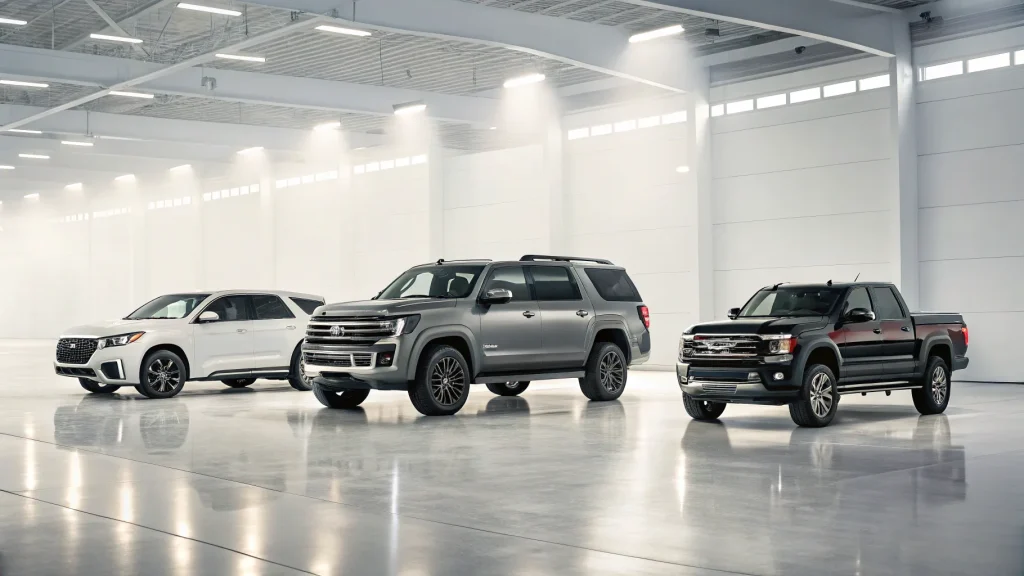Purchasing a vehicle represents one of the most significant financial decisions many consumers make. With numerous options available in today’s automotive market, understanding the differences between major vehicle categories can help buyers make informed choices that align with their lifestyle needs and budget constraints.
The three primary vehicle categories—sedans, SUVs, and trucks—each offer distinct advantages and limitations. These differences extend beyond mere appearance to include practical considerations such as fuel efficiency, cargo capacity, and overall cost of ownership.
Sedans: The Traditional Choice
Sedans remain a popular option for many drivers, characterized by their enclosed passenger compartment with separate trunk space. These four-door vehicles typically seat five passengers and offer several advantages over their larger counterparts.
The financial appeal of sedans is significant. They generally cost less than comparable SUVs or trucks, both in initial purchase price and ongoing expenses. Most sedans deliver superior fuel economy, with many models achieving 30-40 miles per gallon on highways—substantially better than most SUVs and trucks.
Handling represents another sedan strength. Their lower center of gravity provides better stability during turns and emergency maneuvers. This design feature also makes sedans easier to park in tight urban spaces.
However, sedans do have limitations, particularly in cargo capacity and ground clearance. Their trunk space, while adequate for daily needs, cannot match the versatility of SUVs or trucks. Additionally, their lower profile makes them less suitable for rough terrain or areas with significant snowfall.
SUVs: Versatility and Space
Sport Utility Vehicles have surged in popularity over the past decade, appealing to families and active individuals seeking more space and flexibility. These vehicles combine elements of passenger cars with features of light trucks.
The primary advantage of SUVs is their versatility. Most models offer flexible seating configurations and significantly more cargo space than sedans. This adaptability makes SUVs particularly attractive for families, outdoor enthusiasts, and anyone who regularly transports bulky items.
SUVs also provide better visibility due to their elevated seating position, which many drivers prefer for safety and comfort. Their higher ground clearance proves beneficial in adverse weather conditions or on unpaved roads.
The drawbacks of SUVs include higher purchase prices, increased fuel consumption, and sometimes more challenging handling characteristics. Many SUVs cost several thousand dollars more than comparable sedans, while typically delivering 5-10 fewer miles per gallon.
Trucks: Capability and Power
Pickup trucks serve as the workhorses of the automotive world, designed primarily for utility rather than passenger comfort. These vehicles feature an open cargo area (bed) behind the cabin, optimized for hauling and towing.
The unmatched hauling and towing capabilities make trucks essential for contractors, outdoor enthusiasts, and anyone who regularly transports heavy or oversized items. Modern trucks can tow between 7,000-14,000 pounds when properly equipped—far exceeding the capabilities of most SUVs.
Many current truck models offer surprisingly comfortable cabins with advanced technology features. Crew cab configurations can accommodate five or six passengers, making them viable family vehicles despite their utilitarian design.
The significant disadvantages of trucks include:
- Higher purchase prices, especially for well-equipped models
- Poor fuel economy compared to sedans and many SUVs
- More challenging to maneuver in urban environments
- Less secure storage for valuable items
Trucks also typically have higher maintenance costs due to their size and complexity, particularly for models with four-wheel drive systems.
The ideal vehicle category depends largely on individual priorities and usage patterns. Commuters seeking efficiency might prefer sedans, while growing families often gravitate toward SUVs. Those requiring significant hauling capacity find trucks indispensable despite their higher operating costs.
Beyond the vehicle category, buyers should consider specific models within each class, as performance, reliability, and features vary significantly between manufacturers. Test driving multiple options remains essential for making a satisfying long-term vehicle purchase.















